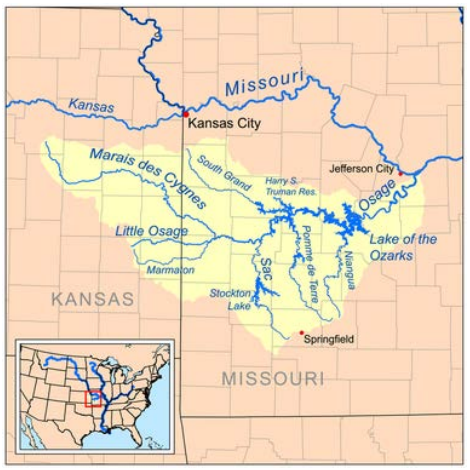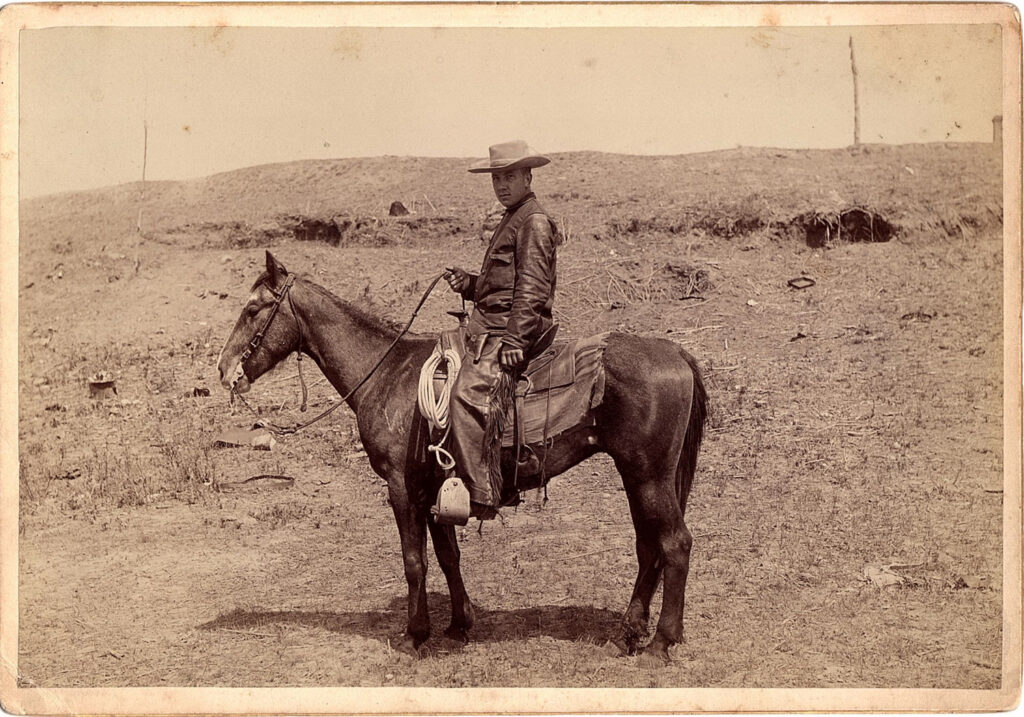Section #19 - Regional violence ends in Kansas as a “Free State” Constitution banning all black residents passes
Chapter 228: The Marais des Cygnes Massacre Again Enflames Kansas
April 1858
Pro-Slavery Men Seek Revenge For A Free-Stater Attack

River Crosses the Missouri-Kansas Border
As the English Bill works its way through Congress, more blood is spilled in Kansas, again following the now familiar tit for tat pattern of aggression leading to revenge.
The sequence begins this time with Free State men lead by one James Montgomery, who moves to Kansas in 1856, only to have his farm burned down by raiders during his first summer there.
Within a year, Montgomery has formed his own “Self Protective Company,” which engages in various acts of violence in the southern part of the state, while dodging patrols of U.S. troops seeking to achieve law and order.
In April 1858, a skirmish known as the Battle of the Yellow Paint ends with one U.S. soldier dead and several other men wounded, including members of Montgomery’s band.
The response comes this time from Charles Hamilton, a Georgian by birth and also the victim of a raid on his Kansas property which drives him out of the state. By the spring of 1858 he is a prototypical Missouri ruffian, intent on insuring that Kansas becomes a Slave State.
May 19, 1858
Free-Staters Executed In Cold Blood

On May 19, 1858, Hamilton gathers a posse of some 25 fighters to launch a “war of extermination” against all Free Staters he can find. They cross the border and arrive at the unincorporated town of Trading Post, Kansas, where they begin to accumulate prisoners, eventually ending with eleven in total.
The men are marched some five miles northeast of the town and ordered into a ravine alongside the Marais des Cygnes River.
Hamilton then orders his men to murder the defenseless prisoners.
When several balk, he reportedly “swears terribly” at them until they comply. Once all have fallen, several killers climb into the ravine to finish them off and to rob their pockets.
Surprisingly six of the victims survive to report on the massacre. Five of them have suffered wounds while a sixth has simply feigned being shot. One, a William Hairgrove, claims to overhearing Hamilton’s words to his men:
We have got eleven of the damned Abolitionists biting the dust, and will return in a few days and seep the entire Valley.
When the six report on the massacre, the embarrassed Pro-Slavers concoct a story, saying that after Hamilton released them, they found arms and opened fire on his troopers who merely shot back.
Summer 1858
The Violence Continues Despite Governor Denver’s Efforts To End It
Now it is Montgomery’s turn to go on the offensive and the two clash again in southern Kansas with casualties on both sides before Hamilton flees across the border.
This fails to deter Montgomery, who follows him to West Point, Missouri, with some fifty soldiers and two cannons.
While a major battle is avoided, the threat level brings Governor Denver onto the scene, including a visit to the Marais des Cygnes site and meetings with leaders from both sides.
Denver does make some headway here, proposes stationing U.S. troops along the border, and gains at least tacit support for his plans from Charles Robinson, head of the Free State Party, and from Hamilton.
Time will also tell that the Montgomery-Hamilton battles mark the end of organized confrontations in Kansas prior to the Civil War.
But James Denver, only six months into his tenure by June 1857, is already feeling a sense of hopelessness about finding a lasting solution for Kansas.
On September 1, 1858 he submits his resignation as the fifth of six Governors of the Kansas Territory.